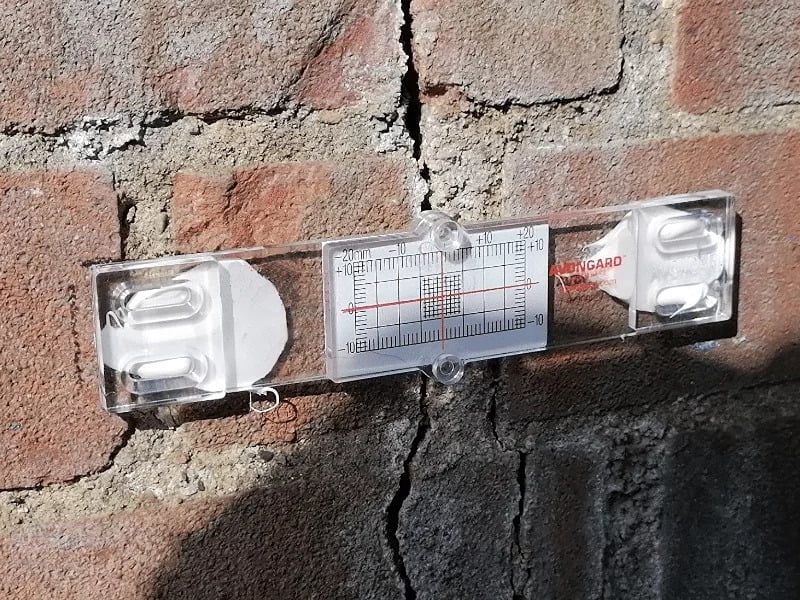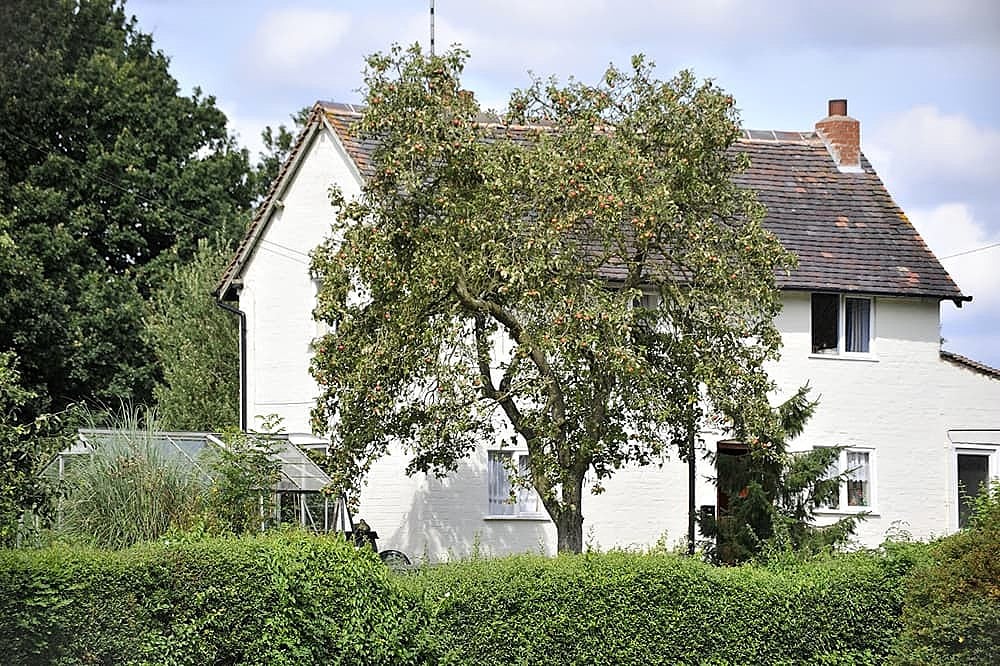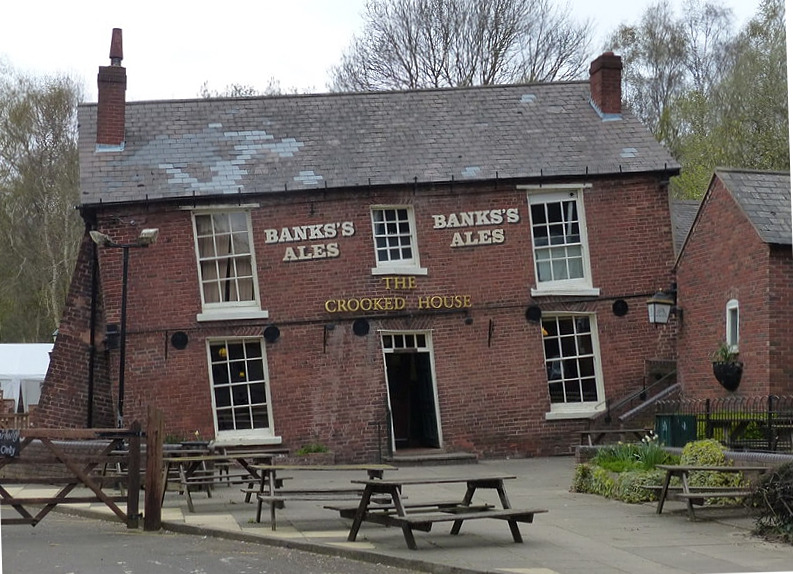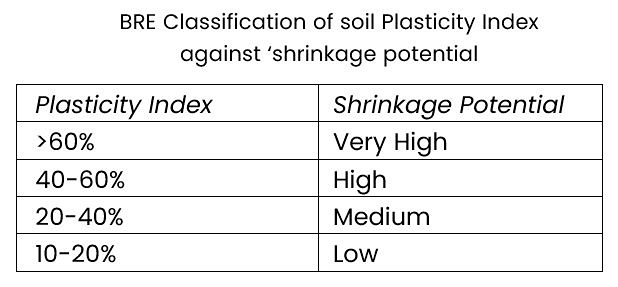Indirect damage caused by Trees
Tree-related Subsidence

The phenomenon of damage to properties caused by tree-related subsidence is curious in that the level of concern it causes is a rather specifically British phenomenon. This is not to say that it doesn’t occur elsewhere, but it does seem that nowhere other than in Britain has it attained such prominence in the minds of homeowners and, indeed, insurers.
The vast majority of cracks that result from subsidence are minor and pose no threat to the structural integrity of the building and in most countries, people either live with the cracks or hire a local builder to make repairs. This was also the prevailing attitude in the UK prior to the 1970s, before which this sort of damage was not generally covered by insurance policies. However this changed when, In the early 1970s as a result of one insurer introducing some extra cover for subsidence, heave, and landslip as an incentive to attract more business. Mortgage lenders took notice and began requiring this coverage for properties under their loans and the close relationship between the lending and insurance industries in the UK quickly made this standard practice. Thus was the Subsidence Claims & Management Industry born!
Anyone involved with tree-related subsidence should read a blog posted by Bob Gibson, a Structural Engineer and Subsidence Consultant. Called “Is the UK out of step with the rest of the world on subsidence?” it provides a fascinating insight into how this British take on the issue has arisen. The text of the blog is available HERE
In general terms, the responses to alleged cases of vegetation induced subsidence have often proved to be extreme and hasty; they are also frequently unjustifiable on the basis of the severity of the alleged damage. In the words of the Building Research Establishment:-
"In light of long experience at BRE over several droughts, and the examination of 140 cases arising from the 1975/76 drought, it can be said that progressive subsidence damage is most uncommon. Only seven of the cases were regarded as involving progression extending beyond the duration of the drought; of these, three or four involved tree removal, which has been clearly identified as a situation where progression can occur [i.e. heave]. Consequently, any precipitate action by interested parties on a case of subsidence damage due to clay shrinkage, whether this action be in the form of removal of suspect trees or underpinning of the affected area of the structure, would be unwise for levels of damage of no more than Category 2. [i.e. cracks between 1 and 5mm wide; essentially aesthetic issues; noticeable but easily filled]
The only certain way of confirming the progression of damage is to take a series of measurements with time."
[From the BRE Digest 251 'Assessment of Damage in Low-Rise Buildings' (1995) - Text available HERE
The BRE webpage on Assessing Cracks in Houses is available HERE]
Notwithstanding the fact that most damage cause by tree-related subsidence is non-structural and often no more than cosmetic, the manner in which it has been dealt with in the UK has historically tended to involve the hugely disruptive and costly underpinning of foundations and as a result, the perceived significance of the issue has become vastly greater than the phenomenon demands.
Accordingly, once a building has been linked to an alleged instance of subsidence, the value of that property can be seriously affected, irrespective of whether the issue has been addressed. Some authorities have calculated that a claim for subsidence can devalue your property by anywhere from 5% to as much as 25%. Bearing this in mind it will be seen that subsidence claims can result in greater damage being done to the equity of the property than the original damage might cause to its structure.

Another aspect of the exaggerated level of concern regarding trees and houses is that the first response of insurers and their agents on being informed of any cracking in a building is to require the removal of any trees nearby. This is often on a purely precautionary basis rather than as a result of any hard evidence that trees are responsible for the problem. Furthermore, the value of the tree is rarely if ever considered.
This precautionary principle is taken even further by some insurers which demand the removal of trees within some arbitrary distance of a house as a condition of providing cover, even when there is no history of subsidence in the property or in the wider area.
In order to be able to assess the significance (or otherwise) of these issues it’s important to have some understanding of the processes that can lead to both subsidence and to heave (the latter being the converse phenomenon, where uplift results from soil expansion). These processes are discussed further in the following pages.
Subsidence
Subsidence damage to properties occurs when Parts of the foundations of a building sink, causing walls and sometime floors to shift, leading to cracks to developing in masonry and to doors and windows sticking. In severe cases it can result major structural damage and even to partial collapse, although such extreme cases are generally the result of the collapse of voids beneath the building, those voids having been caused by such things as the dissolution of soluble carbonates from limestone rocks. Mining and mineral extraction can also lead to subsidence, as was the case with the well-known ‘Crooked House’ pub in Staffordshire:

As far as I’m aware no such issues are prevalent in Herefordshire!
While there are some other potential causes for movement in and damage to buildings, for the current purposes we are primarily concerned with structural problems mediated by trees and other vegetation.
Tree-related Subsidence & Heave: What are they?
Tree-related subsidence can occur when the roots of a tree extract sufficient moisture from the soil to cause it to shrink. Different soil types vary widely in their capacity to shrink on drying but in situations when soil desiccation results in significant shrinkage, structures built upon that soil can subside, leading to cracks in the structure and other damage.
Heave can occur when desiccated and shrunken soils are re-hydrated, as may occur when a long-established tree is felled, so removing the influence of its roots upon the soil. This may allow the soil to re-wet, when the expansion of the material causes structures built upon it to be lifted, when once again damage can result.
From the above it will be seen that subsidence/heave events involve the water content of the soil, but many other factors are also involved also critical.
An outline of the processes behind tree-related Subsidence & Heave.
1- Subsidence
Trees need to take moisture from the soil in order to live. This moisture uptake is powered by water being evaporated from its leaves in the process known as transpiration, which effectively ‘sucks’ water from the soil. It can therefore be appreciated that the rate and amount of water uptake will be dependent on a number of factors, notably the weather, with evaporation from the leaves being greater in hot, dry periods. The size of the tree and more particularly its leaf area are also important factor, as is its 'water demand'. This is a pragmatic term rather than being strictly scientific, simply indicating the comparative frequency with which different species of tree have been associated with cases of tree-related subsidence. Thus Oak, Willow and Poplar, which have been blamed for many cases of subsidence, are considered to have a High water demand while Birch and Holly, which are rarely associated with such cases are regarded as having a Low water demand. Species such as Ash, Sycamore, Beech and Horse Chestnut are regarded as falling into an intermediate, ‘moderate water-demand’ category.
Under certain circumstances a tree might take up so much moisture from a soil that, if it is not replenished either by rainfall or by water flowing in from the surrounding land, the soil can become more or less desiccated. This can be of significance to nearby structures, but only if the soils have a tendency to shrink appreciably on drying.
Soils vary very widely in their capacity to shrink on drying: sandy and gravel soils barely shrink at all whereas soils with a high proportion of clay can be subject to quite significant shrinkage on wetting and expansion on drying.
However we do need to be cautious in the use of the word ‘clay’. This does not define a specific mineral but is simply descriptive of a size of soil particle, a ‘clay soil’ being one with more than 30% of its particles being 0.002 mm diameter or less.
All clay soils will be liable to some shrinkage on drying, but the degree to which they shrink can vary widely, depending on the chemical composition of the minerals involved.
Hot, dry weather will increase transpiration and increase the tendency of shrinkable clay soils in the vicinity of tree roots to become partially desiccated. However when such soil re-hydrates, it will tend to swell back to its former state. Because trees in these latitudes effectively cease to transpire during the winter months, the rate of moisture uptake by their roots drops away just at the season when rainfall is usually at its greatest.
The result of this is that symptoms related to tree-related subsidence tend to become noticeable during hot, dry summer months but once transpiration ceases or slows as winter arrives and soil moisture is replenished through increased precipitation, the soils re-hydrate and swell back to their former volume.
There is thus a close correlation between season and soil volume, so that any damage sustained by buildings as a result of soil shrinkage in the summer is followed by recovery over the winter: cracks open during hot, dry summers and close (partially if not completely) over the winter months.
This cyclical pattern, closely linked to the seasons, is an important diagnostic feature of tree-related subsidence, as has been stressed by Dr Giles Biddle, a leading expert in the field of tree-related subsidence, who has written:
“…a characteristic feature where living tree root activity is involved is a pattern of subsidence during summer followed by recovery in the winter. Demonstrating that there are seasonal movements is the most accurate and reliable method for distinguishing vegetation-induced damage from other causes.”
2 - Heave
Under certain circumstances a large, high water-demand tree growing on a shrinkable clay soil may take up so much moisture that winter rains fail to fully re-hydrate it. As a result a ‘persistent water deficit’ builds up and the soil become semi-permanently shrunken as a result.
In such cases, when the tree that has caused the deficit dies or is removed, or even if it is pruned to severely reduce its size, moisture uptake ceases (or is reduced). As a consequence, subsequent rainfall will allow the soil to re-hydrate and to re-assume its former volume: i.e. it will swell. This can cause a building constructed on land affected in this way to be pushed upwards, this being the phenomenon known as ‘heave’.
Damage as a result of heave can be quite serious, but fortunately it is quite unusual, being almost always associated with buildings built on shrinkable clay ground close to where a substantial tree has been present for some time and which was removed prior to construction.
In situations where a building on shrinkable clay suffers subsidence damage due to a tree that has grown up in the presence of the building – i.e. the tree is younger than the house – removing the tree may also cause heave and some uplift of the structure may occur. However this uplift will only be to the degree that it had formerly subsided so that the building would be expected to recover to its former, pre-subsidence level.
The Role of the Soil
As explained above, the type of soil on which a building is built is a critical factor in tree related subsidence, which is almost always associated with heavy clay soils with a high ‘shrinkage potential’.
In Herefordshire the underlying geology is very largely dominated by Devonian deposits of the Lower Red Sandstone, commonly consisting of mudstones and siltstones. The character of soils created from these rocks varies with the degree of weathering they have undergone, but they are generally fine, silty or sandy loams.
The ‘Plasticity Index’ of a soil provides a “useful indication of the potential of the soil for volumetric change” (i.e. its potential to shrink on drying and swell on rewetting). However, the interpretation of P.I. should be “…tempered by experience of the behaviour of the soil in the field”.

Some parts of Herefordshire have soils that are more clayey than loamy (i.e. they contain a higher percentage of clay particles) but most have been found to have plasticity indices in the 10-20% range, that is in the ”low shrinkage potential” range, although a few sites have provided P.I.s that extend into the 20-30% range. But overall, the majority of Herefordshire soils would not be expected to be subject to significant shrinkage under the influence of tree roots.
Soil Erosion
Another significant characteristic of the dominant fine silty soils of the county is their notorious susceptibility to erosion. Tens of thousands of tonnes of soil are washed out of the land onto our rivers (and roads) in every rainstorm; but erosion can also occur on a smaller scale and, when it arises in the vicinity of building foundations it can lead to subsidence.
This is a particular issue when there are leaking drains or water pipes: a persistent flow of water can result in the finer soil particles being washed out which, if it occurs in the vicinity of foundations, can lead to localised subsidence. Even if soil loss to erosion is insignificant, leaking drains can cause the ground to become waterlogged and soft, leading to loss of bearing and, once again, to localised subsidence.
For these reasons it is important that a detailed drain survey forms part of any investigation into an instance of subsidence. If defective drains, or other sources of water leakage into the soil are identified, these should be rectified before precipitate action, such as the felling of trees, is carried out.
Note that subsidence caused by erosion or loss of bearing capacity due to waterlogging will not show the same seasonally cyclical pattern of subsidence and recovery that is characteristic of tree-related subsidence.
Building Construction: Foundations etc.
Building construction and in particular foundation depth is another significant factor when considering subsidence. The National House Building Council has for many years issued guidelines for recommended design when building on a variety of soil types near trees. These can be found in the NHBC Standards document, chapter 4.2: Building near Trees (available HERE .). Constructing buildings in accordance with these recommendations should minimise the risk of being affected by the root action of nearby trees.
The first edition of the NHBC Standard was published in 1974 and the recommendations for building near trees have been significantly strengthened over the years and as a result, older properties built may have shallower foundations than are currently specified and so could be more liable to foundation movement as a result.
On the other hand old properties, especially stone-built houses where lime-based mortar was used, are more forgiving of minor movement and are generally less susceptible to damage as compared to more recent brick and block-built houses, jointed with more brittle cement-based mortar. Timber framed buildings can similarly accommodate minor movement without harm.
Properties with cellars are extremely unlikely to suffer subsidence damage as the cellar floor level will usually be much lower than tree roots would be expected to penetrate.
Damage tends to arise as a result of differential movement, with cracks developing where one part of a building moves in relation to another part. This is not infrequently encountered where extensions, especially conservatories, have been added to an existing building, the extension being provided with shallower foundations than those of the main house.
Diagnosis & Assessment of Building Movement
The symptom likely to be first noticed is the development of a crack or cracks in in house walls. These may arise for a number of reasons other than as result of tree-root activity, including:
‘Natural’ settlement, particularly of newly constructed building;
Plaster shrinkage is one of the most common causes of cracks in walls, although these are essentially cosmetic and easily repairable.
Cracks may develop as a result of a mismatch of materials, for instance when hard, inflexible gypsum plasters or cement renders are applied to walls constructed with more flexible lime mortar.
Faulty drains and water pipes leaking water can cause erosion of soil near and under foundations causing them to settle. Waterlogged soil can also lead to a loss of bearing capacity which may also result in settlement.
Damp and water ingress may lead to cracks of walls and ceilings, especially after heavy rainfall or flooding: the source of such water ingress should be investigated and resolved.
Vibration due to road traffic, mine or quarry blasting; earthquakes are uncommon but minor tremors are not unknown in the county and could lead to cracking of walls.
Differential movement can lead to cracking at the junction between the two structures, such as extensions or conservatories that have been constructed with shallower foundations than the main house, leading to different rates of movement.
Cracking that develops as a result of tree roots acting in a shrinkable clay soil will generally become apparent after a hot, dry summer. They will frequently manifest themselves in the structurally weakest parts of a building, such as at the corners of windows and doors, where the resulting distortion of their frames may lead to windows and doors sticking.
Cracks in walls generally step diagonally through the courses and tend to be wider at the top than at the bottom. The main area of damage would be expected to be closest to the tree or vegetation under suspicion as the main cause and, as already noted, will become apparent and/or will worsen after periods of hot, dry weather.
Investigation
An investigation to establish the cause should include:
The age of the building should be established and any previous damage that has occurred in this or in other nearby proprties should be recorded.
A survey identifying and quantfying the damage and its location in relation to any nearby trees, including their distances from the site of damage.
The tree or trees should be identified by species and assessed for their maturity and their general health and vigour. Tree assessments should be carried out by a suitably qualified arboriculturist.
Excavations should be made to establish the type and depth of foundations.
Samples of roots found close to or under the foundations should be carefully collected for identification by an appropriate specialist. (Note: while the presence of the roots of a suspect tree does not provide proof of its involvement in a case of subsidence, their presence would be required to establish legal liability.)
Trial pits should be dug or bore holes driven and soil samples taken both in the vicinity of the area of damage and further afield. These should be analysed to establish the soil type, moisture content and plasticity index
Crack and/or level monitoring should be established, setting markers around the building to monitor any changes in level or cracks. Readings from these should be recorded at regular intervals over a period of at least 6 months and preferably for 12 months or more, long enough to determine if cyclical movement is occurring, involving subsidence and recovery, or if the situation is progressive, i.e. whether subsidence is continuing or if it has stabilized. Demonstrating recovery is fundamental to establishing vegetation as a cause.
In order that a proportionate response to an alleged case of subsidence damage can be achieved it is necessary to assess the value of the tree so that this can be compared to the significance of the alleged damage and the cost of that would be involved in making good that damage. Tree value should be established both in terms of its public amenity, its ecological significance and its value as habitat for wildlife.
The Helliwell System is based on expert judgement and focuses on valuing the visual amenity of a tree. Documentation is available HERE, (The system is currently under review and may be revised).
Methods to assess the economic value of a tree or trees include
CAVAT, (Capital Asset Value for Amenity Trees)
and ‘i-Tree My Tree’
